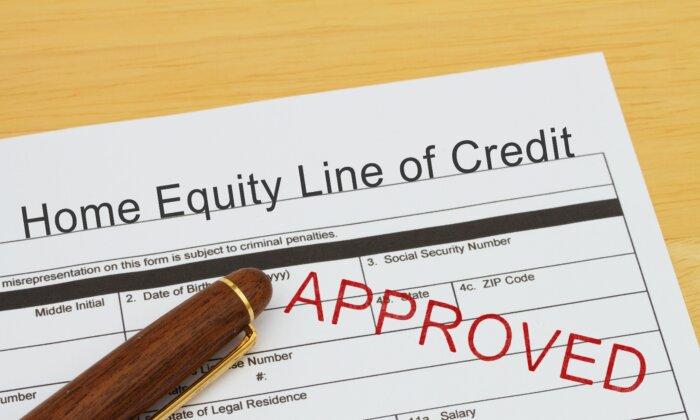Are you looking to unlock the potential of your home’s equity and wondering how to use a home equity lines of credit (HELOC) to your advantage? A HELOC provides you with a line of credit secured by your home, offering greater flexibility to tackle projects that demand substantial upfront investments.
But because a HELOC is collateralized by your home, you should consider the home equity line of credit pros and cons before using one.
In this article, we’ll explore the ins and outs of HELOCs, shedding light on the benefits of home equity line of credit and how they can be a valuable financial tool for homeowners.
Discover the advantages and potential pitfalls, and learn when and how to use a HELOC wisely.
Understanding HELOC Pros and Cons
A HELOC is a revolving line of credit, much like a credit card. According to the Consumer Trade Commission, the difference is that a HELOC allows you to borrow against your home equity, with your home acting as collateral.
You can typically borrow 60–85 percent of your home’s equity. A majority of HELOCs have variable interest rates, typically with a rate cap.
Before delving into the details of using a HELOC, it’s essential to grasp the home equity line of credit pros and cons.
Understanding the potential HELOC advantages and drawbacks will help you make informed decisions.
HELOC Benefits
A HELOC offers several advantages that make it a flexible and appealing financial option. Some advantages of a home equity line of credit include access to funds as needed, lower interest rates compared to credit cards, and potential tax deductions on interest payments.
- Flexible Access to Funds
HELOC provides a revolving line of credit, allowing you to access only the amount you need, as you need it, similar to a credit card. - Lower Annual Percentage Rates (APRs)
HELOCs typically offer lower APRs compared to credit cards or personal loans, making them a cost-effective borrowing option. - May Offer Tax Deductible Interest
In some cases, the interest paid on a HELOC may be tax-deductible, providing potential tax benefits. - You Can Use the Funds However You Like
HELOC funds can be used for several purposes, such as home improvements, debt consolidation, education expenses, and emergency funds. - Interest-Only Payments
Some HELOCs allow interest-only payments during the “draw period,” providing flexibility in managing your monthly obligations. - Revolving Credit
As you repay the borrowed amount, the credit line replenishes, offering ongoing access to funds without the need for reapplication. - Financial Planning
HELOCs can be part of a strategic financial plan, helping you achieve specific goals, such as home renovations or debt consolidation. - Potential to Improve Credit Score
As with all lines of credit, making timely payments can increase your credit score over time.
Disadvantages of A HELOC
While a HELOC offers numerous benefits, it’s essential to be aware of potential disadvantages. These include the risk of overspending, variable interest rates, and the possibility of using your home as collateral.
- Interest Rate Could Rise
HELOCs often have variable interest rates that can lead to fluctuating monthly payments and potentially higher costs if rates rise significantly. - Potential to Run Up Big Balance Rapidly
Easy access to funds can lead to overspending and accumulating more debt than initially planned. - Home Becomes Collateral for The Loan
Your home serves as collateral for a HELOC, putting your home at risk of foreclosure if you fail to repay the borrowed funds. - May Have Ongoing Fees
HELOCs may have application fees, closing costs, and annual fees that can add to the overall expense. - Market Fluctuations
The available credit limit in a HELOC may be affected by changes in your home’s market value. - Potential for Payment Shock
HELOCs have a draw period followed by a repayment period, and borrowers should be prepared for higher monthly payments during the repayment phase. - Responsible Repayment
Failing to make payments on a HELOC can lead to financial strain and damage to your credit score. - Incomplete Control
Lenders can reduce or freeze your HELOC limit if they perceive a change in your financial circumstances.
How to Use a HELOC
Using a HELOC wisely involves understanding the best ways to leverage this financial tool.
HELOCs come with the risk of potentially soaring payments when the draw period ends, which could put your home at risk if you can’t meet the loan obligations.
Due to this risk, here is when and how to use HELOCs to your advantage:
- Home Improvements This is arguably the best way to use a HELOC. HELOCs are ideal for financing home improvements completed in stages, allowing you to access funds as needed. If these improvements enhance your home’s value, the interest paid on the HELOC may be tax-deductible.
- Major Home Repairs Unexpected major repairs like roof replacements can strain your budget if your emergency fund falls short. A HELOC can cover the costs, and the interest may be tax-deductible if these repairs increase your home’s value.
- Financial Emergencies Whether it’s a job loss, significant medical expenses, or other financial crises, a HELOC can provide vital support during challenging times.
- Paying off High-Interest Debt Using a HELOC to pay off high-interest debt like personal loans and credit card debt can be a sensible move as long as you have a well-defined plan to prevent accumulating new credit card debt. Without a solid strategy, you could end up with both high credit card balances and HELOC payments.
Tips to Choose the Right HELOC for You
Selecting the right HELOC involves evaluating your financial goals, considering the terms and conditions, and comparing offers from different lenders.
Here are some tips to help you choose the right HELOC for you:
- Determine Your Financial Goals
Begin by pinpointing your financial objectives. Are you looking to renovate your home, consolidate debt, cover education expenses, or have a financial safety net for emergencies? Understanding your financial goals will help you tailor your HELOC to your needs. - Have Enough Home Equity
Calculate the amount of equity you have in your home. Most lenders require a certain level of equity to qualify for a HELOC. Ensure you meet these requirements before proceeding. - Consider a Fixed vs. a Variable Rate
Shop around for HELOCs from different lenders to compare interest rates. Pay attention to whether the rates are variable or fixed and how they may impact your monthly payments. - Factor in Costs and Fees
Ask about any fees associated with the HELOC, such as application fees, closing costs, annual fees, or prepayment penalties. Consider the overall cost of the HELOC, not just the interest rate. - Understand When the HELOC Draw Period Ends
HELOCs typically have a draw period during which you can access funds and a repayment period when you must repay the borrowed amount. Take time to understand the duration of these periods and the associated terms. - Be Mindful of How Much You Borrow
Determine the credit limit offered by the HELOC and whether it meets your financial needs. Some HELOCs may allow for credit limit adjustments over time based on your payment history and home equity. - Review Payment Options
Understand the repayment options available, including interest-only payments during the draw period and principal and interest payments during the repayment period. Choose an option that aligns with your personal budget and unique financial goals. - Consider Tax Implications
Consult with a qualified tax advisor to comprehend the potential tax implications of your HELOC, including deductions on interest payments. Tax laws can vary, so it’s important to be informed. - Take Advantage of Competitive Terms and Discounts
Look for HELOCs that offer competitive terms and benefits, such as no or low closing costs, minimum borrowed balances, rate discounts for auto-pay, or loyalty programs. - Read the Fine Print
Carefully review the terms and conditons of the HELOC agreement. Pay attention to any clauses related to rate adjustments, changes in credit limits, and penalties for non-payment. - Consult a Financial Adviser
If you’re uncertain about which HELOC is right for you, consider consulting a qualified financial advisor or mortgage specialist. They can provide tailored guidance based on your financial situation. - Plan for Responsible Use
Before committing to a HELOC, create a plan for responsible use. Set a clear purpose for the borrowed funds and establish a repayment strategy to avoid overspending and financial strain.
Do I Have Enough Equity for a HELOC?
Before applying for a HELOC, assess your home’s equity to determine if you qualify for this financial option. Knowing how much equity you have is crucial in the application process.
Ending: Tips to Remember About How to Use HELOC
As you embark on your HELOC journey, keep in mind the benefits of home equity line of credit, potential drawbacks, and responsible borrowing practices.
Understanding how to use a HELOC effectively and home equity line of credit pros and cons can help you reach your financial goals while safeguarding your home’s equity.
Incorporate these insights into your financial planning and make the most of your home’s equity with a HELOC.
The Epoch Times copyright © 2023. The views and opinions expressed are those of the authors. They are meant for general informational purposes only and should not be construed or interpreted as a recommendation or solicitation. The Epoch Times does not provide investment, tax, legal, financial planning, estate planning, or any other personal finance advice. The Epoch Times holds no liability for the accuracy or timeliness of the information provided.







